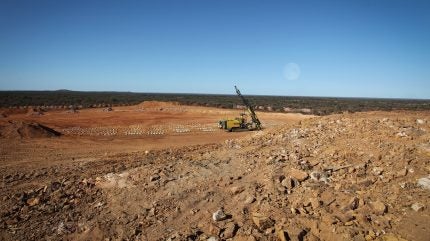Sign up for daily news updates from CleanTechnica on email. Or follow us on Google News!
Google has signed an agreement with NV Energy, part of the Warren Buffett empire, to buy 115 MW of renewable energy from a geothermal facility operated by Fervo Energy to power its data centers in Nevada. A lot has been written lately, particularly here at CleanTechnica, about data centers and their voracious appetite for electricity. We hear all the time about how this renewable wind farm or that solar farm can power tens of thousands of homes, but what we don’t hear is that a large percentage of that renewable energy powers no homes at all. Instead, it goes to feed the profusion of data centers operated by Google, Meta, X, and Amazon, among others, around the country and around the world. The state of Virginia alone has over 300 data centers within its borders.
Fervo Energy is adopting the horizontal drilling techniques developed by the oil and gas industries and re-purposing them to access subterranean areas where temperatures are hot enough to make superheated steam. That steam is then used to spin turbines that make electricity. The drilling can be expensive, but once a source of underground heat is tapped, the energy to heat the steam is free for as long as the heat source lasts — a couple of millennia, assuming humans survive that long. It is much less expensive that building a new nuclear power plant, and it can be completed in about four months, years or even decades before a new nuclear facility can be completed in the US today.
Fervo Pioneers Geothermal Energy
Geothermal resources are available virtually everywhere underground, representing a potentially vast supply of clean electricity and industrial heat. Yet most of those resources are too deep or technically complicated to access in a cost-effective way using traditional methods. Fervo Energy, which has raised more than $180 million since 2017, is among dozens of companies in the US and worldwide which are working to develop easier and cheaper ways of unleashing the potential of geothermal energy.
It uses horizontal drilling techniques and fiber optic sensing tools to create fractures in hard, impermeable rocks found far below earth’s surface, then pumps the fractures full of water and working fluids. At Fervo’s test site in Nevada, it has drilled two wells 7,700 feet deep that connect with horizontal conduits stretching some 3,250 feet on either side. The super-hot rocks at that distance below the Earth heat those liquids to as much as 376° F. The idea is to create geothermal reservoirs in places where naturally occurring resources aren’t available.
In recent years, enhanced geothermal projects in a handful of other countries were shut down after triggering earthquakes and rattling surrounding cities. Since then, companies have stepped up efforts to monitor and mitigate induced seismic activity. Fervo said it had adopted a protocol developed by the Department of Energy to avoid causing seismic events at its project sites.
Fervo Partners With Google
Fervo Energy has been developing its geothermal technology in Nevada with financial assistance from Google, which is planning to power all its data centers with zero emission electricity from renewable sources by 2030. “When we began our partnership with Fervo, we knew that a first-of-a-kind project like this would require a wide range of technical and operational innovations,” Michael Terrell, Google’s senior director of energy and climate, wrote in a November 28 blog post. “The result is a geothermal plant that can produce round-the-clock [carbon-free energy] using less land than other clean energy sources,” he said, adding that Google “worked closely with Fervo to overcome obstacles and prove that this technology can work.” Google declined to share financial details about its agreement with Fervo or the cost of the electricity that the geothermal facility is producing.
According to Data Center Dynamics, Google has entered into a new type of power supply deal with NV Energy. Called a “clean transition tariff,” it will see NV Energy procure 115MW of renewable energy from a geothermal power plant run by Fervo Energy. The utility in turn will supply it directly to Google to run its data centers. The agreement must first be approved by the state energy regulator, since it is a novel arrangement that is sort of like a power purchase agreement, but with a twist. Google claims the clean transition tariff will help accelerate the clean energy transition by providing companies like NV Energy with the funds they need to invest in new technologies upfront. That differs from a traditional power purchase agreement in which data center operators like Google procure clean energy directly from producers and provide it to the grid to offset their emissions.
In a joint blog post, Amanda Peterson Corio, Google’s global head of data center energy, and Briana Kobor, head of energy market innovation, said: “Technologies like enhanced geothermal, long-duration energy storage and advanced nuclear power, are early-stage, relatively costly and poorly incentivized by current regulatory structures. As a result, customers often still rely on fossil fuels for reliable power when solar and wind aren’t available. To access the benefits of 24/7 carbon free energy technologies and meet the growing needs of local grids, we need a new approach that makes it easier to invest in clean energy projects that provide firm capacity to the grid.”
Fervo already has a standard PPA in place with Google to supply 3.5MW of geothermal energy, which was announced last year. Doug Cannon, president and CEO of NV Energy, described the new partnership as “remarkable.” He said, “This innovative proposal will not be paid for by NV Energy’s other customers but will help ensure all our customers benefit from cleaner, greener energy resources. If approved, it provides a blueprint for other utilities and large customers in Nevada to accelerate clean energy goals. We look forward to progressing this proposal through the regulatory process to approval and look forward to sharing this with other customers to advance the additional economic opportunities it can bring to our State.”
The Takeaway
When we think about renewable energy, we usually think of wind, solar, or hydro. Now there is a new technology to add to the mix, one that does not suffer from the intermittency of wind and solar or rely on the water level in lakes or rivers. Harvesting the latent heat far below the surface of the Earth to make steam can solve many of the practical problems with wind and solar and eliminate the need for grid scale storage batteries. In fact, it’s positively brilliant — if the technology can be perfected and made cost competitive with other renewables. Google is willing to take a chance on it, which is a hopeful sign.
Have a tip for CleanTechnica? Want to advertise? Want to suggest a guest for our CleanTech Talk podcast? Contact us here.
Latest CleanTechnica.TV Videos
CleanTechnica uses affiliate links. See our policy here.





